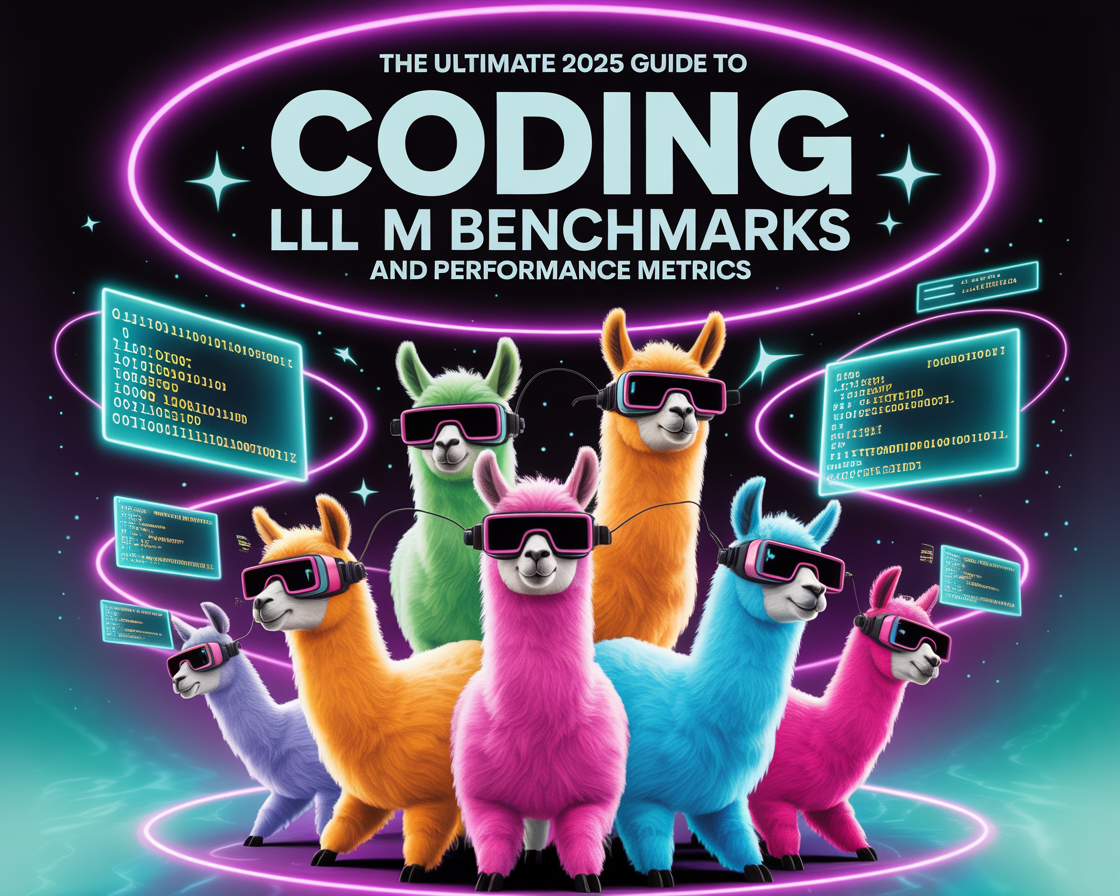The Ultimate 2025 Guide to Coding LLM Benchmarks and Performance Metrics

Large language models (LLMs) specialized for coding are now integral to software development, driving productivity through code generation, bug fixing, documentation, and refactoring. The fierce competition among commercial and open-source models has led to rapid advancement as well as a proliferation of benchmarks designed to objectively measure coding performance and developer utility. Here’s a detailed, data-driven look at the benchmarks, metrics, and top players as of mid-2025.
Core Benchmarks for Coding LLMs
The industry uses a combination of public academic datasets, live leaderboards, and real-world workflow simulations to evaluate the best LLMs for code:
- HumanEval: Measures the ability to produce correct Python functions from natural language descriptions by running code against predefined tests. Pass@1 scores (percentage of problems solved correctly on the first attempt) are the key metric. Top models now exceed 90% Pass@1.
- MBPP (Mostly Basic Python Problems): Evaluates competency on basic programming conversions, entry-level tasks, and Python fundamentals.
- SWE-Bench: Targets real-world software engineering challenges sourced from GitHub, evaluating not only code generation but issue resolution and practical workflow fit. Performance is offered as a percentage of issues correctly resolved (e.g., Gemini 2.5 Pro: 63.8% on SWE-Bench Verified).
- LiveCodeBench: A dynamic and contamination-resistant benchmark incorporating code writing, repair, execution, and prediction of test outputs. Reflects LLM reliability and robustness in multi-step coding tasks.
- BigCodeBench and CodeXGLUE: Diverse task suites measuring automation, code search, completion, summarization, and translation abilities.
- Spider 2.0: Focused on complex SQL query generation and reasoning, important for evaluating database-related proficiency1.
Several leaderboards—such as Vellum AI, ApX ML, PromptLayer, and Chatbot Arena—also aggregate scores, including human preference rankings for subjective performance.
Key Performance Metrics
The following metrics are widely used to rate and compare coding LLMs:
- Function-Level Accuracy (Pass@1, Pass@k): How often the initial (or k-th) response compiles and passes all tests, indicating baseline code correctness.
- Real-World Task Resolution Rate: Measured as percent of closed issues on platforms like SWE-Bench, reflecting ability to tackle genuine developer problems.
- Context Window Size: The volume of code a model can consider at once, ranging from 100,000 to over 1,000,000 tokens for latest releases—crucial for navigating large codebases.
- Latency & Throughput: Time to first token (responsiveness) and tokens per second (generation speed) impact developer workflow integration.
- Cost: Per-token pricing, subscription fees, or self-hosting overhead are vital for production adoption.
- Reliability & Hallucination Rate: Frequency of factually incorrect or semantically flawed code outputs, monitored with specialized hallucination tests and human evaluation rounds.
- Human Preference/Elo Rating: Collected via crowd-sourced or expert developer rankings on head-to-head code generation outcomes.
Top Coding LLMs—May–July 2025
Here’s how the prominent models compare on the latest benchmarks and features:
Real-World Scenario Evaluation
Best practices now include direct testing on major workflow patterns:
- IDE Plugins & Copilot Integration: Ability to use within VS Code, JetBrains, or GitHub Copilot workflows.
- Simulated Developer Scenarios: E.g., implementing algorithms, securing web APIs, or optimizing database queries.
- Qualitative User Feedback: Human developer ratings continue to guide API and tooling decisions, supplementing quantitative metrics.
Emerging Trends & Limitations
- Data Contamination: Static benchmarks are increasingly susceptible to overlap with training data; new, dynamic code competitions or curated benchmarks like LiveCodeBench help provide uncontaminated measurements.
- Agentic & Multimodal Coding: Models like Gemini 2.5 Pro and Grok 4 are adding hands-on environment usage (e.g., running shell commands, file navigation) and visual code understanding (e.g., code diagrams).
- Open-Source Innovations: DeepSeek and Llama 4 demonstrate open models are viable for advanced DevOps and large enterprise workflows, plus better privacy/customization.
- Developer Preference: Human preference rankings (e.g., Elo scores from Chatbot Arena) are increasingly influential for adoption and model selection, alongside empirical benchmarks.
In Summary:
Top coding LLM benchmarks of 2025 balance static function-level tests (HumanEval, MBPP), practical engineering simulations (SWE-Bench, LiveCodeBench), and live user ratings. Metrics such as Pass@1, context size, SWE-Bench success rates, latency, and developer preference collectively define the leaders. Current standouts include OpenAI’s o-series, Google’s Gemini 2.5 Pro, Anthropic’s Claude 3.7, DeepSeek R1/V3, and Meta’s latest Llama 4 models, with both closed and open-source contenders delivering excellent real-world results.
Michal Sutter is a data science professional with a Master of Science in Data Science from the University of Padova. With a solid foundation in statistical analysis, machine learning, and data engineering, Michal excels at transforming complex datasets into actionable insights.




